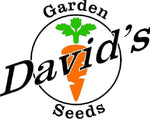autumn garden
fall garden
fall garden 2024
fall vegetables
fall worksheet
growing in fall
plant a fall garden
planting in fall
vegetables in fall
Fall Garden 2024
This is my plan for the Fall Garden 2024. Part of what we are doing is planting for Agritourism on our farm.
We will also be filming everything. We will try to get a video once a week showing what we are doing and the progress of the plants. We will even try to get some aerial views.
These videos are going to be broken down into sections as we give full instructions about planning, buying, planting, growing, harvesting and, where appropriate, storing for the fall garden.
Here in 9a, fall is the best time for gardening. It seems we get a couple of weeks of Spring then right into Summer. But even during fall the temperatures can be high.
My father used to plant for the Spring but never Fall or early Winter. Many things will grow in the winter here in zone 9a.
This is going to be a big challenge for us, but we need a challenge.
I have included a worksheet that you can download to get some idea of how I do my planning. You can download and print my list (which we will offer free this year). And you can delete the dates I have in mind and put your own in.
The first thing you will want to do is find the days to maturity or harvest for each seed you plant.
Then you will need to figure out what your first frost day will be. You can go to Almanac.com for this. Just put your zip code in and you will get your first approximate frost date of winter and your last frost date of next spring. This is when the temperature drops to 32, but keep in mind that some plants will stop growing when the temperatures drop below 50 degrees. Keep in mind that usually the information you will find is based on a 30 year average. Do your homework.
For me, the first frost date is around November 22. Now there are no absolutes in gardening especially when it comes to predicting the weather. “Gardening is like gambling. Only the odds are worse.” – Bob Webster.
For instance, bean plants will continue to grow when it gets cold, around 40 to 50, but not freezing, but the beans will have a woody taste to them.
If the bees have stopped moving, then your vegetables that need them for pollination, will not produce. These are squash and zucchini. You can try hand pollination.
Next you will have to determine whether the vegetable you plan on planting is to be direct sown or transplanted and if it is cold hardy or will die when it gets cold.
If it is frost hardy, then having everything harvested by the first frost date is not necessary unless you are expecting temperatures to drop down below 28. 28 seems to be the lowest that most cold hardy vegetables can go without being damaged.
If it is not frost hardy, or even cool weather hardy, then you will want to space your planting so that you have harvested everything by the first frost.
Then count down from the first frost date or cold weather date or date you want to start to harvest. This is the day you will want to plant on. I have added 30 days for the vegetables I will be transplanting.
From this I determine a planting date. Lots of figures and math to do, but it is well worth it.
For example: We are planting pumpkins to sell and to harvest so we will want them to be ready around the 2nd week of October. The pumpkin variety is a fast growing one so we will direct sow it. It takes about 110 days (under perfect conditions) for it to reach maturity. This is for the New England Pie. In order to have these ready, I will have to plant on July1st. July 1st we will make a second planting and June 24th we will make a first planting.
New England Pie – will die when frost hits and slow down when temps get below 50 or so.
It is June 15th, and here most everything has given up the ghost because of the heat. Because we have a well, we are still watering tomatoes and peppers. We will be getting our beds ready and out transplant pots filled with germination mix.
Because we are a seed supplier, we have everything on hand.
Be watching for the links to our video. They should start around the 2nd of July.







Thank you for sharing!!
I am so happy I found your blog / website. I live out in East Texas. Trying to get into gardening with a busy schedule and teenagers while living on a small acre in town. I want to learn how we can grow our own food, how to keep the soil nutritious, etc. This site is awesome and so helpful. I plan to purchase seeds soon once I can plot what and where I can grow in my yard!
Cannot wait for these videos ! I’ll be planting using your guide ! Thanks for the info can’t wait for fall gardening
Leave a comment